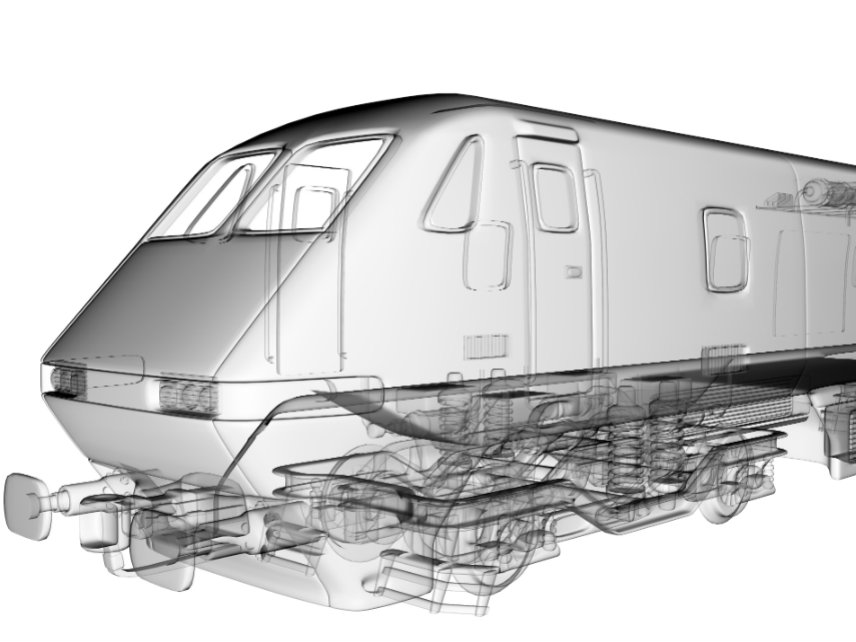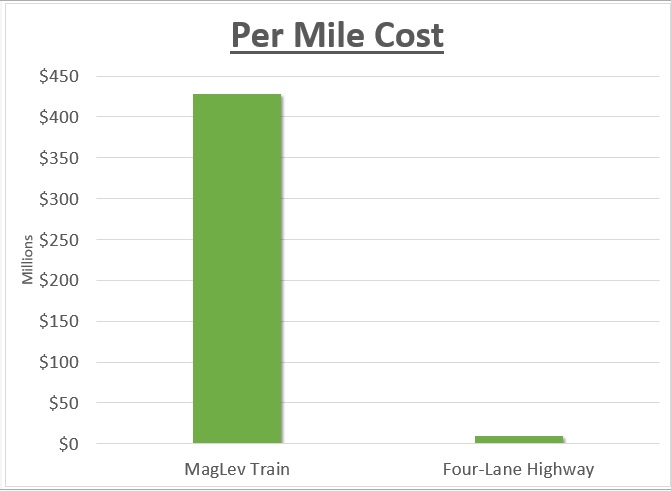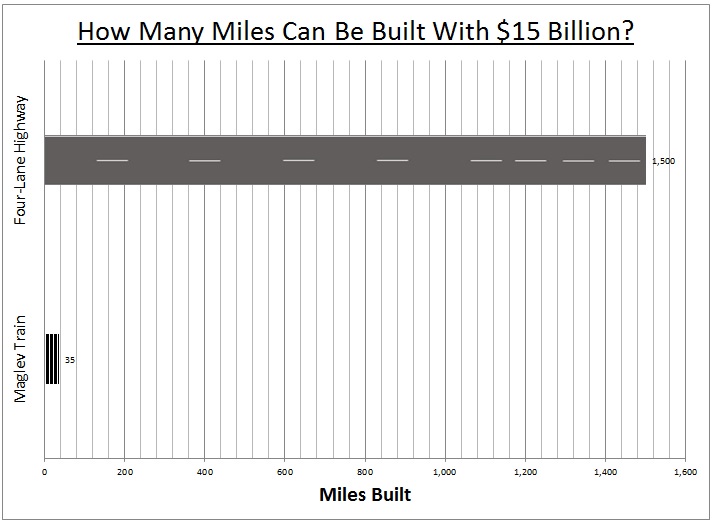Proposed Baltimore-to-D.C. Maglev Train Would Cost as Much as Building 1,500 Miles of Highway
The $15 billion project would connect two cities that are only 35 miles apart. That's $420 million per mile-if it stays on-budget.

High-speed rail boondoggles aren't just for California anymore.
A proposal to build a high-speed maglev train between Baltimore, Maryland, and Washington, D.C., took a step toward enaction this week with the announcement of three potential routes for the rail line, UrbanTurf reports. The Federal Railroad Administration, the Maryland Department of Transportation, and other agencies involved in the project are planning a series of public meetings to gather citizens' input on the project.
Here's my input: I can't believe this is something that's seriously under consideration.
For now, there is no official estimate of how much the train will cost, but the website for the Baltimore-Washington Superconducting Maglev Project includes a projected cost of between $10 billion and $15 billion. Even if you give them the benefit of the doubt about the final price tag—something you probably shouldn't do, given how much other high-speed rail projects have ended up costing—that still raises some serious questions about the fiscal sanity of building this thing.
$15 billion is an amount so astronomically large that it is difficult to comprehend. So let's consider the relative costs of building this train versus, say, a new four-lane highway between D.C. and Baltimore.
The proposed maglev train doesn't have a precise route yet, but the routes under consideration are all in the neighborhood of 35 miles long. That means the maglev would cost about $420 million per mile.
According to the American Road & Transportation Builders Association, a national trade group, it costs about $10 million per mile to build a four-lane highway through a suburban or urban area, which is how most of the land between Washington and Baltimore would be classified.

Here's an alternative visualization. In this graphic, we are comparing how many miles of Maglev train can be built with $15 billion versus how many miles of four-lane highway could be built with an equal amount of funding.

This is insanity.
Also worth considering: Resurfacing an existing four-lane highway costs about $1.25 million per mile, meaning that the maglev's $15 billion price tag could be used instead to resurface about 12,000 miles of roadway. That's more than a third of all roads in the state of Maryland.
One more way to visualize this fiscal craziness: The WMTA, which runs buses and subways in Washington, has an expected total operating budget of $1.7 billion next year. The Maryland Transit Administration, which runs the Baltimore subway, various light-rail lines around the city, and the MARC train between Baltimore and D.C., has a total operating budget of $787 million this year.
For the cost of building this train—not operating and maintaining, but merely building it—you could fund both the WTMA and the MTA through 2024 without asking taxpayers or riders to pay a single dime toward either system.
That probably sounds pretty good to commuters in D.C., who have been squeezed by the WMATA with fare increases and service cuts in the past two years. A functional subway system in the nation's capital would certainly serve more people than a super-expensive train between downtown D.C and downtown Baltimore.
After all, exactly how useful would a train like this be? Most of the (admittedly horrific) traffic in the D.C. metro area is the result of commuters going back and forth between the city itself and the suburbs. Another train between D.C. and Baltimore—did I mention there already is a non-maglev train between the cities?—would be of limited utility for most residents of the greater Baltimore-D.C. metro area, even with a stop at the airport. It would likely do little to get cars off the road. Anyone needing to travel farther up the East Coast would still have to drive, or use Amtrak, or fly.
The planners behind the maglev project say this would be the first leg in a train line that would eventually connect Washington to New York City or even Boston. But those other parts of the project won't be built until the 2040s, according to the project's website (and holy moly, can you imagine how expensive the rest of the line would be?). Until then, this would be—sorry in advance, Baltimore—a train to nowhere.
Some money has already been flushed away on this idea: The federal government issued a $27.8 million grant in 2015 for the project's planning and preliminary engineering. The project is soaking taxpayers in foreign countries too, thanks to the Japanese government's decision to put up $5 billion in support. Maglev trains are already used in Japan and Japanese companies would be well positioned to bid on this project, if it gets that far.
That's a lot of money, but it's nothing compared to how much could end up being spent on this boondoggle.
This piece has been updated to correct the number of highway miles able to be built with $15 billion.


Show Comments (83)